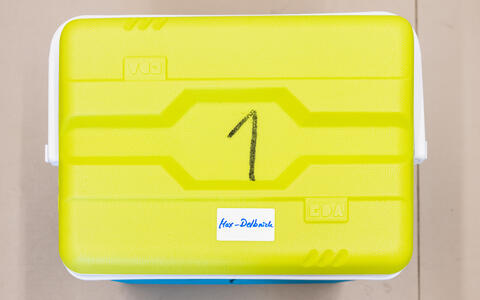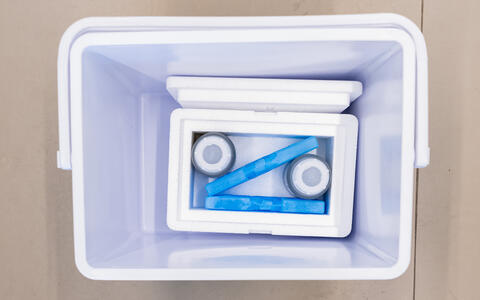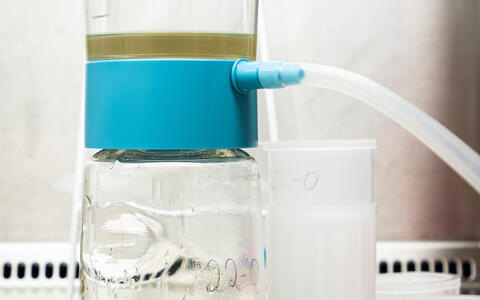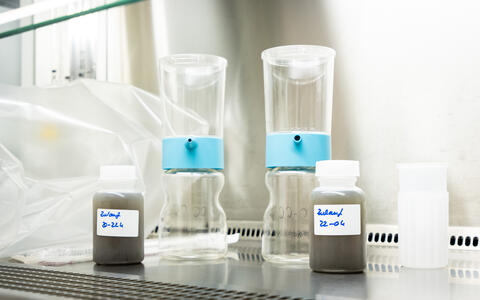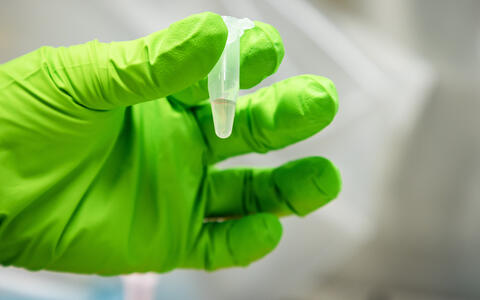📺 What Berlin wastewater reveals about the coronavirus
We can read very precisely what concentration the virus has in the wastewater.
Berlin scientists are fishing in murky waters. Since February 2021, researchers at the Max Delbrück Center for Molecular Medicine in the Helmholtz Association (MDC) have been studying Berlin’s wastewater. Together with the local water supply company, Berliner Wasserbetriebe (BWB), they want to find out what is floating around in the sewage pipes. Medications and drugs leave behind traces, as do pathogens. “We are focusing on the SARS-CoV-2 virus,” says Professor Markus Landthaler, who heads the RNA Biology Lab at the MDC’s Berlin Institute for Medical Systems Biology (BIMSB). Along with his research group, other BIMSB laboratories are involved in the project. The BWB is also cooperating with the German Environment Agency (UBA) and the Helmholtz-Centre for Environmental Research (UFZ) in Leipzig.
As murky as the wastewater is, it is also rich in information. “Not only can we read very precisely what concentration the virus has in the wastewater,” Landthaler emphasizes. The researchers can also determine which variants are present. “Meanwhile, we are dealing almost exclusively with the British mutation.”
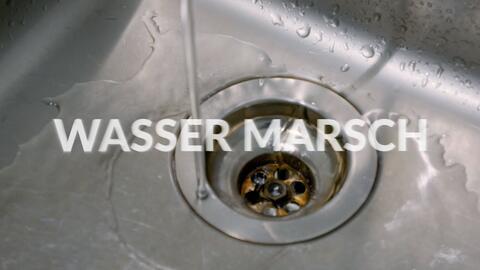
Early warning system for the spread of the virus
Studies around the world have revealed that this data can already predict a few days in advance whether incidence will increase or decrease.
The scientists want to establish analytical methods that can act as “predictive tools” to forecast the spread of SARS-CoV-2. Dr Altuna Akalin, head of the Bioinformatics and Omics Data Science Platform at BIMSB, and his team have developed a computer-based tool based on geotagged sequencing results. It can be used to track the spread of SARS-CoV-2 variants based on wastewater sequencing results. The tool can reveal the frequency of SARS-CoV-2 variants as well as detect emerging mutations.
“The virus concentration in wastewater corresponds fairly closely to the incidence curve,” explains Dr. Emanuel Wyler from Landthaler’s team. “However, studies in various locations around the world have revealed that this data can already predict a few days in advance whether incidence will increase or decrease.” Hence regular sewage monitoring can serve as an early warning system that indicates a resurgence in infection numbers earlier than tests on infected people. “The sooner people learn that the virus is spreading more again, the sooner they can take precautions to protect themselves and others from infection,” Wyler says.
MDC researchers are not the only ones convinced of the significance of wastewater. The European Commission has called on EU member states to put in place national wastewater surveillance systems by October 1, 2021. To this end, wastewater in large cities with a population of 150,000 or more is to be analyzed twice a month to determine whether it contains SARS-CoV-2. The results will then be transmitted electronically to the responsible health authorities and from there to a European exchange platform that the EU Commission intends to set up. Scientific teams throughout Europe are working to devise appropriate analytical methods.
Berlin wastewater offers a good outlook: incidence rate currently declining
Humans excrete the virus through saliva and stool. From sinks and toilets, the wastewater flows through Berlin’s sewage system into a total of six treatment plants outside the city. BWB employees regularly take samples at the plants to verify the water quality. Once a week, they send composite samples to BIMSB. The scientists filter the brown broth, enrich the virus particles that they find, and isolate and sequence the viruses’ genetic material. Then they bioinformatically analyze the sequencing data. Although they are using it to reliably detect SARS-CoV-2, it is unlikely that sewage could become a transmission route for the virus. “The viruses we find are good for forecasting purposes, but they are not infectious,” Wyler points out. Currently, their concentration suggests that the incidence rate will soon drop as temperatures grow warmer.
Further information
- Viruses and drinking water: Information from Berliner Wasserbetriebe (German only)
- Corona viruses and the environment: Information from the Federal Environment Agency (German only)
- Corona and environmental research: Information from the Environmental Research Centre (UFZ)


